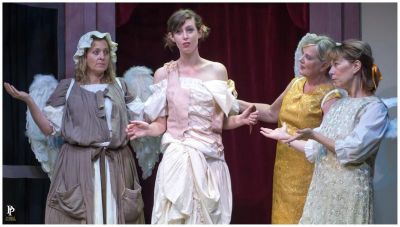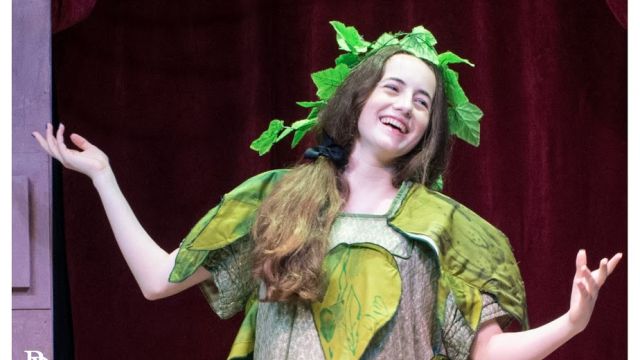Playhouse Creatures
April de Angelis’ historical/feminist play is set in the late17th Century when Charles II was restored to the English throne after the rigid ‘rule’ of Oliver Cromwell. Charles, who had been exiled in France, wrought many cultural changes in English society, including allowing women to play the female roles in theatre productions, The play exposes the difficulties faced by the women who braved harsh conditions to realise their artistic ambition – little training, poor pay, the ridicule of some audiences and the need felt by some to attract and accept the ‘favours’ offered by wealthy ruling class ‘gentlemen’.
Using excerpts from the popular plays of the time, the play, directed by Patsy Templeton, follows the lives of six actresses, exposing their strengths and frailties and the extremes to which some of them chose to go for the sake of their art. The action moves back and forth from stage to dressing room. This can become a little confusing and certainly causes some problems with continuity in this production, as performers are required to rifle through costume boxes and change during the dialogue – a difficult ask for the best of performers, even more so for young actors with little stage experience.
 The play – and this production – is held together by the three more ‘seasoned’ members of the King’s Players Company. Doll Common, played with resigned apathy by Wendy Morton, is the company drudge, sweeping floors, hearing lines, listening to complaints and filling in minor roles. This part provides the only comic relief of the play, and Morton makes the most of her asides and ascerbic responses.
The play – and this production – is held together by the three more ‘seasoned’ members of the King’s Players Company. Doll Common, played with resigned apathy by Wendy Morton, is the company drudge, sweeping floors, hearing lines, listening to complaints and filling in minor roles. This part provides the only comic relief of the play, and Morton makes the most of her asides and ascerbic responses.
Julia Griffith plays Mrs Betterton, the ageing wife of the Actor-Manager of the company. Used to getting the only plum female roles, she is respected by the others until ‘moved on’ by her husband because of her age.
Mrs Farley, played by Diane Howden, has succumbed to the advances of the King but suffers the anguish of rejection when she is replaced in his favours by the young Nell Gwyn (Simonne Sakker). Claire de Mellow, plays the Mrs Marshall and Camille Symonds is the young Mrs Barry, wily protégé of the Earl of Rochester.
 Rochester and Otway are played by Eugene Mitchell and Andrew Cougle. While their costumes are very 17th century foppish, their wigs could do with some attention from a trained wig specialist.
Rochester and Otway are played by Eugene Mitchell and Andrew Cougle. While their costumes are very 17th century foppish, their wigs could do with some attention from a trained wig specialist.
The highlight of the production is the witches scene from Macbeth, where voices, timing and lighting come together to the create atmosphere and mood that is missing from so many of the other scenes.
Carol Wimmer
Images (from top): Camille Symonds; Wendy Morton, Claire de Mellow, Julia Griffith & Diane Howden, and Diane Howden, Andrew Cougle, Eugene Mitchell & Simonne Sakkar.
Subscribe to our E-Newsletter, buy our latest print edition or find a Performing Arts book at Book Nook.

